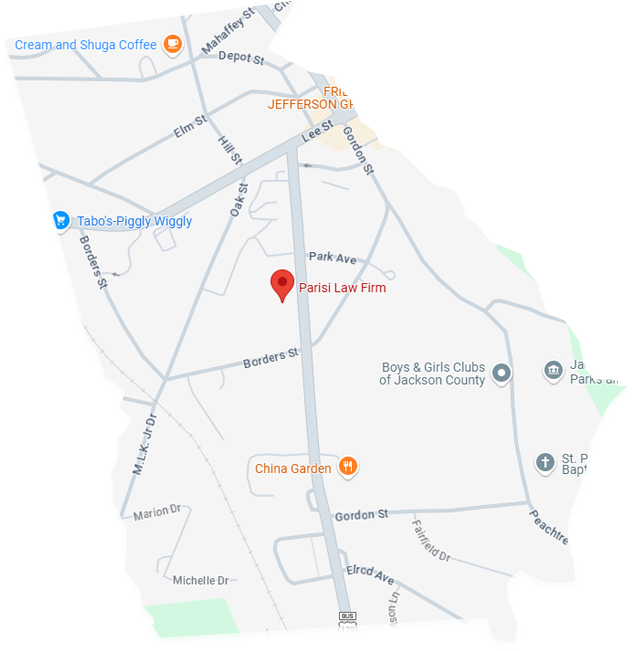
Tips for Avoiding Bicycle Accidents: Essential Bike Safety Tips
Bicycle accidents send thousands of riders to emergency rooms each year, often resulting in serious injuries that could have been prevented. Whether you’re commuting to work, exercising, or enjoying a leisurely ride, understanding proper bike safety can mean the difference between a pleasant outing and a life-changing accident. As personal injury attorneys who have handled countless bicycle accident cases, we’ve seen firsthand how the right safety measures can protect you both physically and legally.
Why Bicycle Safety Matters
The Rising Risks of Bicycle Accidents
Recent statistics paint a concerning picture for cyclists across the United States. The National Highway Traffic Safety Administration reports that bicycle fatalities have increased by over 36% in the past decade. Every year, approximately 467,000 cyclists suffer injuries serious enough to require emergency room treatment.
These numbers represent more than statistics—they’re real people whose lives were forever changed in an instant. Many of these accidents could have been prevented with proper safety precautions and awareness. The rising popularity of cycling, combined with increased traffic congestion and distracted driving, has created a perfect storm for bicycle accidents.
Urban areas see particularly high accident rates, with intersections accounting for nearly 40% of all bicycle-vehicle collisions. However, suburban and rural roads present their own dangers, including higher vehicle speeds and less predictable traffic patterns.
Legal Consequences and Injury Claims
When bicycle accidents occur, the legal implications can be complex. Determining fault often involves examining traffic laws, road conditions, and the actions of both the cyclist and other parties involved. Many cyclists don’t realize they have legal rights similar to other vehicle operators, which can impact their ability to seek compensation for injuries.
Bicycle accident cases frequently involve substantial medical expenses, lost wages, and long-term rehabilitation costs. Head injuries, broken bones, and spinal cord damage are common, often requiring months or years of treatment. Without proper documentation and legal representation, victims may find themselves overwhelmed by insurance companies and mounting bills.
Bike Safety Tips Every Cyclist Should Follow
Wear the Right Bicycle Safety Gear
Your safety gear serves as your first line of defense against serious injury. While no equipment can prevent all accidents, proper bicycle safety gear significantly reduces the severity of injuries when crashes occur.
Helmets are Non-Negotiable: A properly fitted helmet reduces the risk of head injury by up to 85%. Choose a helmet certified by the Consumer Product Safety Commission (CPSC) and replace it every five years or after any impact. The helmet should sit level on your head, with the chin strap snug but comfortable.
Reflective Clothing Saves Lives: High-visibility clothing makes you visible from greater distances, giving drivers more time to react. Bright colors work well during daylight hours, but reflective materials are essential for dawn, dusk, and nighttime riding. Consider investing in a reflective vest or jacket specifically designed for cycling.
Protective Pads Matter: While not always necessary for casual riding, protective pads for knees, elbows, and wrists can prevent road rash and fractures during falls. Mountain bikers and those riding in high-traffic areas should strongly consider additional protection.
Obey Traffic Laws and Signals
Bicycles are considered vehicles under most traffic laws, which means cyclists must follow the same rules as cars. This isn’t just about avoiding tickets—it’s about predictability and safety.
Ride With Traffic Flow: Always ride in the same direction as vehicle traffic. Riding against traffic increases your risk of accidents by 300% because drivers don’t expect to see cyclists approaching from the wrong direction.
Stop at Red Lights and Stop Signs: Complete stops aren’t just legally required—they give you time to assess intersection dangers. Look for turning vehicles, pedestrians, and other cyclists before proceeding.
Use Hand Signals: Clear communication with drivers prevents accidents. Signal turns and stops well in advance, and make eye contact with drivers when possible to ensure they see you.
Stay Visible on the Road
Visibility issues cause many bicycle accidents, especially during low-light conditions. Making yourself seen should be a top priority every time you ride.
Invest in Quality Lights: Front white lights and rear red lights aren’t just good ideas—they’re legally required in most areas after dark. Choose lights with multiple settings, including steady and flashing modes. USB-rechargeable lights offer convenience and reliability.
Strategic Reflector Placement: Beyond required reflectors, add extra reflective elements to your bike and gear. Spoke reflectors, pedal reflectors, and reflective tape on your frame increase visibility from all angles.
Choose High-Contrast Clothing: Bright yellows, oranges, and whites stand out against most backgrounds. Avoid dark colors, especially during overcast conditions or near sunset.
Avoid Distracted Riding
Distraction contributes to countless bicycle accidents each year. Your full attention is required to navigate safely among vehicles, pedestrians, and road hazards.
Phone Use is Dangerous: Texting, calling, or checking apps while riding significantly increases accident risk. Pull over safely if you must use your phone, or invest in hands-free systems designed for cyclists.
Headphone Risks: While not illegal everywhere, headphones can prevent you from hearing approaching vehicles, emergency sirens, or other cyclists. If you must listen to music, use bone-conduction headphones that don’t block ambient sound, and keep volume low.
Stay Mentally Present: Avoid riding when emotionally upset, extremely tired, or under the influence of any substances. Your reaction time and decision-making abilities are crucial for safe cycling.
Ride Defensively
Defensive riding assumes that other road users might make mistakes and prepares you to respond safely when they do.
Anticipate Driver Behavior: Watch for signs that drivers might not see you—sudden lane changes, phones in hands, or failure to check blind spots. Give vehicles extra space, especially large trucks and buses with significant blind spots.
Scan for Road Hazards: Potholes, debris, wet leaves, and storm drains can cause serious accidents. Develop the habit of constantly scanning ahead for potential dangers, and adjust your path safely when necessary.
Maintain Safe Following Distances: Leave plenty of space between yourself and vehicles ahead. This gives you time to react if they stop suddenly and provides escape routes if needed.
Bicycle Safety Gear You Should Invest In
Helmets and Why They’re Essential
The human brain isn’t designed to withstand the forces involved in bicycle accidents. Even seemingly minor falls can result in traumatic brain injuries that affect victims for years.
Modern bicycle helmets use advanced materials and design principles to absorb and distribute impact forces. Look for helmets with MIPS (Multi-directional Impact Protection System) technology, which provides additional protection against rotational forces common in bicycle accidents.
Replace your helmet after any significant impact, even if visible damage isn’t apparent. The protective foam inside may be compromised, reducing effectiveness in future accidents. Also, replace helmets every five years as materials degrade over time and safety standards evolve.
Reflective Vests and Bright Clothing
Visibility gear is one of the most cost-effective safety investments you can make. High-visibility clothing works by increasing contrast against backgrounds and reflecting light back to its source.
Professional-grade reflective vests designed for cyclists offer superior visibility compared to generic safety vests. Look for vests with 360-degree reflectivity and breathable materials that won’t overheat during exercise.
Consider seasonal visibility needs. Bright colors work well against summer backgrounds but may blend in with autumn foliage. Reflective elements become increasingly important as daylight hours decrease.
Front and Rear Bike Lights
Quality bike lights serve multiple purposes: they help you see obstacles and road conditions while making you visible to others. Modern LED technology provides powerful illumination in compact, affordable packages.
Front lights should provide both wide flood beams for general visibility and focused spot beams for distance viewing. Rear lights should be visible from at least 500 feet and include both steady and flashing modes.
Battery life is crucial for safety. Choose lights with long run times and battery indicators. Many cyclists carry backup lights or portable battery packs for extended rides.
Protective Gloves and Eyewear
While often overlooked, gloves and eyewear provide important protection and comfort benefits. Cycling gloves protect palms during falls and improve grip in wet conditions. They also reduce fatigue and numbness on longer rides.
Quality cycling eyewear protects against wind, dust, insects, and UV rays. Clear or light-tinted lenses work well for most conditions, while darker lenses help on bright, sunny days. Wraparound styles provide the best protection and peripheral vision.
Common Causes of Bicycle Accidents
Driver Negligence
Driver behavior contributes to the majority of serious bicycle accidents. Common forms of negligence include failing to yield right-of-way, following too closely, distracted driving, and aggressive driving behaviors.
“Right hook” accidents occur when drivers turn right across a cyclist’s path without checking blind spots. “Left cross” accidents happen when drivers turn left in front of oncoming cyclists. Both scenarios frequently result in serious injuries due to impact forces and potential secondary crashes.
Distracted driving has reached epidemic proportions, with smartphones being the primary culprit. Drivers checking texts, making calls, or using navigation apps often fail to notice cyclists sharing the roadway.
Poor Road Conditions
Infrastructure problems create significant hazards for cyclists. Potholes, cracked pavement, debris, and inadequate drainage can cause sudden falls or force cyclists into traffic lanes.
Construction zones present particular challenges, often funneling cyclists into narrow spaces shared with vehicles. Temporary surfaces, loose gravel, and changed traffic patterns increase accident risks substantially.
Seasonal conditions compound infrastructure problems. Ice, snow, wet leaves, and storm debris create slippery surfaces and obscured hazards. Sand and salt used for winter road treatment can also cause handling problems for bicycles.
Lack of Visibility
Visibility issues contribute to accidents in various conditions. Dawn and dusk present particular challenges as human vision adapts to changing light conditions. Weather conditions like fog, rain, and overcast skies further reduce visibility.
Geographical factors also play roles in visibility-related accidents. Hills, curves, trees, and buildings can obscure cyclists from driver view until it’s too late to avoid collisions.
Rider Inexperience
New cyclists often lack the skills and knowledge necessary to navigate safely in traffic. Common mistakes include improper lane positioning, failure to signal intentions, and inability to predict traffic patterns.
Experience also affects equipment choices and maintenance. Inexperienced riders may not recognize when their bikes need repairs or adjustments that could prevent accidents.
What to Do If You’re Injured in a Bicycle Accident
Seek Medical Attention Immediately
Your health is the top priority after any bicycle accident. Even if you feel fine initially, adrenaline can mask serious injuries. Head injuries, internal bleeding, and spinal damage may not produce immediate symptoms but can be life-threatening if untreated.
Emergency responders can assess your condition and provide necessary treatment at the scene. They’ll also document the accident, which can be valuable for insurance claims and legal proceedings.
Follow up with your personal physician even after emergency treatment. Some injuries, particularly soft tissue damage, may not become apparent for days after the accident.
Gather Evidence and Accident Details
If you’re able to do so safely, collect information at the accident scene. Take photos of vehicle damage, road conditions, traffic signals, and your injuries. Get contact information from the other party and any witnesses.
Police reports provide official documentation of the accident circumstances. Make sure officers understand your version of events, and request a copy of the report for your records.
Keep detailed records of all medical treatment, expenses, and how your injuries affect daily activities. This documentation supports insurance claims and potential legal action.
Contact a Personal Injury Lawyer for Bicycle Accident Claims
Bicycle accident cases involve complex legal issues that can significantly impact your recovery compensation. Insurance companies often attempt to minimize payments or deny claims entirely, particularly when cyclists are involved.
An experienced bicycle accident attorney understands the unique challenges these cases present. They can investigate the accident thoroughly, negotiate with insurance companies, and protect your rights throughout the process.
Time limits apply to personal injury claims, so don’t delay in seeking legal advice. Many attorneys offer free consultations to evaluate your case and explain your options.
How Parisi Law Firm Can Help
Experienced in Bicycle Accident Cases
At Parisi Law Firm, we understand the unique challenges bicycle accident victims face. We know how to investigate bicycle accidents thoroughly, working with accident reconstruction experts and medical professionals to build strong cases. Our understanding of traffic laws, insurance practices, and liability issues gives our clients significant advantages in pursuing compensation.
Fighting for Fair Compensation in Sports Injury and Road Accident Claims
Bicycle accidents often result in substantial damages beyond immediate medical expenses. Lost wages, rehabilitation costs, property damage, and pain and suffering can create significant financial burdens for victims and their families.
We fight aggressively to ensure our clients receive full compensation for all their damages. This includes both economic losses like medical bills and lost income, as well as non-economic damages such as pain, suffering, and reduced quality of life.
Our track record includes numerous substantial settlements and jury verdicts for bicycle accident victims. We’re prepared to take cases to trial when insurance companies refuse to offer fair settlements.
FAQ: Bicycle Safety and Accident Claims
What is the most important piece of bicycle safety gear?
While all safety equipment is important, a properly fitted helmet is the most critical piece of bicycle safety gear. Helmets reduce the risk of head injuries by up to 85% and can mean the difference between a minor accident and a life-changing brain injury.
Can I file a claim if a driver hit me while biking?
Yes, you can file a claim if a driver’s negligence caused your bicycle accident. Cyclists have the same rights as other vehicle operators and can seek compensation for medical expenses, lost wages, pain and suffering, and other damages resulting from accidents.
What should I do if poor road conditions caused my accident?
Poor road conditions that contribute to bicycle accidents may create liability for government entities responsible for road maintenance. These cases can be complex and have strict filing deadlines, so it’s important to consult with an attorney quickly if you believe road conditions played a role in your accident.
How long do I have to file a bicycle injury claim?
Statutes of limitations vary by state, but most personal injury claims must be filed within two to three years of the accident date. However, some circumstances can affect these deadlines, so it’s best to consult with an attorney as soon as possible after your accident.
If you’ve been injured in a bicycle accident, don’t face the legal challenges alone. Contact Parisi Law Firm today for a free consultation to discuss your case and learn about your options for pursuing compensation. Our experienced attorneys are ready to fight for your rights and help you get the recovery you deserve.




